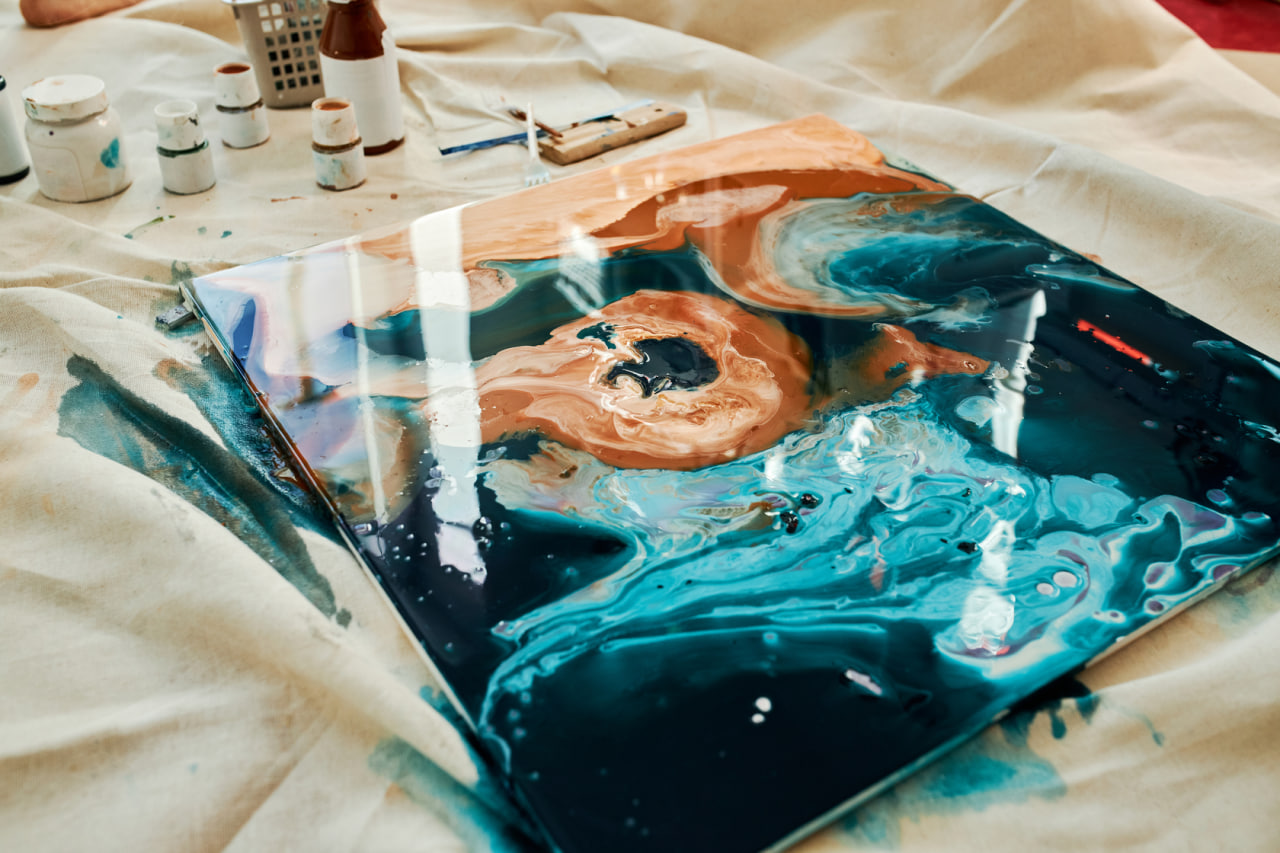Finishing and polishing are the final steps in resin art that transform a project from good to professional. A well-finished resin piece not only looks visually stunning but also enhances durability and longevity. Proper finishing highlights colors, embedded objects, and textures while providing a smooth, reflective surface that gives your work a high-quality, glossy appearance.
Preparing the Surface
Before polishing, it is essential to prepare the resin surface. After the resin has fully cured, inspect it for imperfections such as bubbles, dust, or uneven areas. Light sanding can remove small bumps, edges, and surface irregularities. Start with a coarse grit sandpaper to remove major imperfections and gradually move to finer grits to achieve a smooth base.
Working on a flat, stable surface ensures that sanding and polishing are even. Use circular or gentle back-and-forth motions to prevent scratches or uneven spots. Rinse and dry the surface between sanding stages to monitor progress and remove dust particles.
Sanding Techniques
Sanding is crucial for achieving a professional finish. Use wet sanding techniques to prevent dust and reduce friction heat, which can damage the resin. Wet sanding involves applying water to the surface and the sandpaper while gently sanding, creating a slurry that smooths the resin efficiently.
Begin with medium-grit sandpaper (around 400–600 grit) to eliminate imperfections, then move to fine grit (1000–2000) to refine the surface. For intricate areas or corners, smaller sanding blocks or sponge sanders can be used to maintain control. Gradually smoothing the resin prepares it for polishing and helps achieve a flawless glossy finish.
Polishing Methods
Polishing is what gives resin its characteristic glass-like shine. Polishing compounds or specialized resin polishes work well to enhance clarity and luster. Apply a small amount of polish to a soft cloth or polishing pad and rub it onto the surface in circular motions.
For larger pieces, power tools such as rotary polishers or buffing machines can save time and produce consistent results. Begin with a light touch to avoid creating heat or scratches. Polishing brings out the depth of colors, embedded objects, and transparent layers, making them appear vivid and three-dimensional.
Using Buffing and Coating
After sanding and polishing, applying a protective topcoat or resin layer enhances durability and maintains the glossy appearance. Clear epoxy or polyurethane coatings provide additional scratch resistance, UV protection, and water resistance. Apply the topcoat evenly with a brush, roller, or pour technique, ensuring it covers all edges and corners.
Buffing after coating can further enhance the shine. A soft buffing pad or microfiber cloth can bring out a mirror-like finish, highlighting the colors and embedded elements in the resin. This final step ensures that the piece looks professionally crafted and visually striking.
Avoiding Common Issues
Several common issues can affect the finish if not addressed:
- Cloudiness – Caused by dust, air bubbles, or incomplete curing. Wet sanding and polishing help restore clarity.
- Scratches – Can occur during sanding or handling. Gradually finer grits and careful polishing remove surface scratches.
- Uneven Shine – Polishing evenly and using proper pressure ensures consistent gloss across the piece.
- Residue – Cleaning the resin with a soft, lint-free cloth removes polishing residue for a pristine surface.
Enhancing Depth and Detail
Polishing also enhances the visual depth of layered resin pieces. Transparent layers, embedded objects, and color gradients appear more vibrant and dimensional once the surface is smooth and reflective. Finishing highlights the craftsmanship and draws attention to intricate details, creating a captivating, professional-quality piece.
Tips for Maintaining the Gloss
Once a resin project is finished, proper care maintains the glossy surface:
- Clean with a soft, damp cloth instead of abrasive materials.
- Avoid prolonged exposure to sunlight to prevent yellowing or fading.
- Store or display pieces in stable, dust-free environments to reduce scratches.
Finishing and polishing are essential for taking resin art to the next level. By carefully sanding, polishing, and applying protective coatings, artists can achieve a flawless, glossy finish that enhances colors, depth, and detail, giving each project a professional and visually striking appearance.

